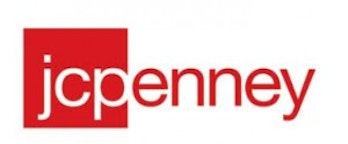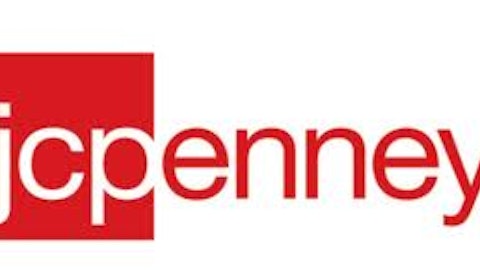
The Bigger Picture
J.C. Penney Company, Inc. (NYSE:JCP), a 110 year old company, has been a staple soft-goods retailing chain for a long time. However, the company has been losing market share and has had difficulty competing with low-end retailers such as Kohl’s Corporation (NYSE:KSS) and Target Corporation (NYSE:TGT), as well as high end retailers like Macy’s, Inc. (NYSE:M) and fashion specialty retailers like Nordstrom, Inc. (NYSE:JWN). In the year ended January 2012, the company registered a loss of $152 million and a 2.8% drop in top-line revenue.
Ron Johnson, the current CEO, was brought in to revive the retail chain on the basis of his experience in running Apple Inc. (NASDAQ:AAPL)’s retail business and at Target. At Apple, Johnson was credited with innovations like the Genius Bar.
Johnson’s plan was put in effect in February 2012, and at that time, according to Harvard Business School’s Working Knowledge, was “one of the most intensely watched experimentsin the future of retailing, as the industry grapples with how to entice shoppers away from their keyboards and back to the sales floor.”
It wasn’t going to be easy, and FY 2012 results proved it; so did Ron Johnson when he admitted that “We also made some big mistakes and I take personal responsibility for these.”
Fiscal Year Q4 2012 Earnings Reviewed
Penney reported a net loss of $552 million in the final quarter ended Jan. 27 as against $87 million in Q4 prior year. This calculates as $2.51 per share and is more than six times the loss per share of $0.41 reported in the same quarter prior year. Even if restructuring and non-pension plan expenses are excluded, the net loss per share is $1.95. Net sales fell by 27% to $3.88 billion. Online sales through the company’s online store were down by 34.4% to $315 million as compared to Q4 prior year.
During the quarter, the company accounted for a charge of roughly $0.24 per share ($86 million) in regard to impairment and write-off of certain store related assets. It also incurred a charge of $148 million or $0.41 per share on account of lump-sum settlement from primary pension plan opted by participants leaving the company.
For the full year, the reported loss was $4.49 per share ($985 million). Adjusted net loss after excluding restructuring expenses, markdowns for realigning inventory to new strategy and non-cash primary pension plan expense as well as net gain from sale/redemption of NPAs (non-performing assets) was $766 million or $3.49 per share.
The silver lining was that despite such bad results, the company’s operating cash flow was almost neutral and that it had almost a billion dollars ($930 million to be precise) in cash and cash equivalents at the end of the quarter. In addition, selling, general and administration (SG&A) expenses were $134 million less than the fourth quarter of previous year.
Competition
Before we go into future prospects for J.C. Penney Company, Inc. (NYSE:JCP), let’s have a brief look at its competitors, Macy’s and Kohl’s.
Both Kohl’s and Macy’s are profit making companies. Whereas net income at Macy’s is $1.35 billion on revenues of $27.06 billion, Kohl’s is lower at $1.06 billion on revenues of $18.96 billion. Macy’s annual EPS is $3.23 and Kohl’s $4.38. Valuation wise, Macy’s is more than three times JCP and roughly one and a half times Kohl’s.
Whereas, all three have almost similar gross margins (Macy’s:0.40, Kohl’s:0.37 and Penney: 0.33), JCP is a loss making company with a negative EPS.
For Investors
Despite disappointing (to say the least because they are actually pathetic) quarterly results, all is not lost for J.C. Penney if one looks at it in the long term.
Small investors who are invested in the stock will definitely find solace in the repeatedly professed faith in Johnson’s strategy expressed by hedge fund manager Bill Ackman. According to Ackman, whose Pershing Square Capital Management is Penney’s top shareholder, it will take Johnsons’ strategy a few years more to produce positive results.
In addition, there is a lot that can be read in the fact of increase in cash and cash equivalents despite poor results. From $525 million at the end of Q3, it went up to $930 million. While matters will become clearer only after studying the annual report in detail, this clearly suggests that the company’s new plan seems to be working in some way. Evidently, better inventory management seems to be working; inventory, which was $2.9 billion at the end of the previous fiscal year, dropped to $2.34 billion this time. Moreover, there are no significant scheduled debt repayments until 2015.
On the technical side, the stock has a short interest of 30.91% that is almost 60 million shares representing more than six days’ average trading volume. This indicates that the stock can potentially go up in the short term when short sellers try to cover their positions.
All said and done, whereas increased liquidity, the drop in inventory and short selling suggest buying J.C. Penney if it does open at the level it was trading in afterhours on Feb. 27, it is still a risky game.
There is also the matter of the pending lawsuit that Macy’s has filed against J.C. Penney, its archrival, over exclusivity rights to Martha Stewart Stores. There is a strong possibility of Penney winning the lawsuit. This could be a big plus for the company as Martha Stewart is a big traffic driver, which can boost Penney’s sales.
The fact that the results revealed an even weaker picture than the 27.8% fall in same-store sales that the analysts were predicting has put a huge pressure on Johnson.
If you have a long term horizon, buy JCP only if you believe that Penney will win the lawsuit and have faith in CEO Ron Johnson’s ability to turn it around into a profit making company.
The article This Stock Looks Good for the Long Term originally appeared on Fool.com and is written by Sujata Dutta.
Copyright © 1995 – 2013 The Motley Fool, LLC. All rights reserved. The Motley Fool has a disclosure policy.




